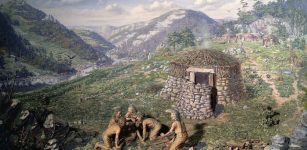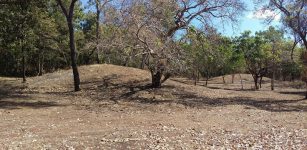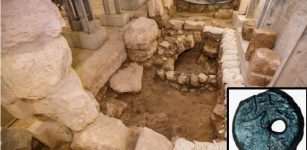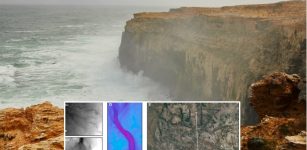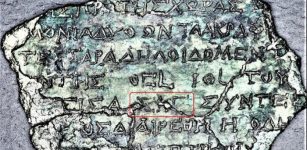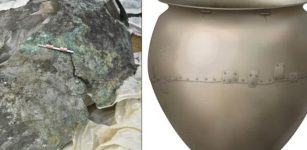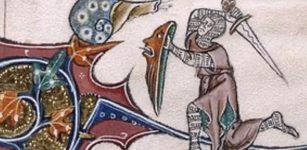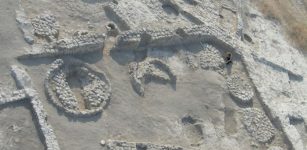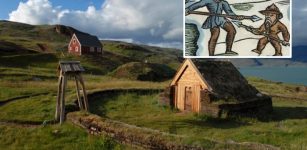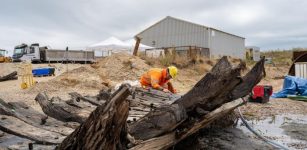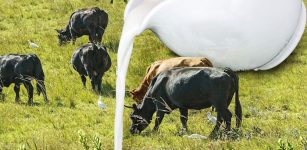Remarkable Discovery Of Ancient Drilled Bear Teeth In Kansas – How Did They End Up On The Great Plains?
Jan Bartek - AncientPages.com - When archaeologists found the first ancient, drilled bear teeth in Kansas they understood quickly this was a surprising find. Later, when they stumbled upon more of these artifacts it was clear the bear teeth were part of a big historical puzzle.
How and why did were these distinctive Hopewell artifacts end up on the eastern boundary of the Great Plains? Most of the teeth have two holes drilled into one side of the tooth.
Unexpected Finding Of Drilled Beer Teeth In Kansas Linked To The Hopewell Culture
The story started in 1974 when amateur archaeologists Harold and Margie Reed discovered bear teeth with holes drilled in them in a plowed field in eastern Kansas.
Credit: Christian Collins - CC BY-SA 2.0
“The teeth are similar to bear teeth found at classic Hopewell sites in Ohio and Illinois. Even given what we know about the extent of the Hopewell Interaction Sphere, it was still a surprise to find them so far to the west.
Recently, Margie Reed donated the teeth to the Kansas Historical Society, making them available for researchers to study. In the summer 2021 issue of the Midcontinental Journal of Archaeology, Kansas archaeologist Robert Hoard described the collection and pondered the question of what these distinctive Hopewell artifacts “are doing on the eastern boundary of the Great Plains,” the Columbus Dispatch reports.
“A minimum of 14 drilled bear canine teeth associated with 5 human teeth and fragmented bone from a surface exposure in east-central Kansas indicate contact between groups participating in the Hopewell social network in the American Midwest. Drilled, polished, ground, and scored bear teeth, along with a range of exotic and symbolic artifacts, are characteristic of Hopewell burial sites. The Kansas site, 14LY405, where the bear teeth were found marks the southwestern extent of the known distribution of sites with a specific kind of drilled bear canines and helps define the boundary of the Hopewell social network in the Great Plains,” Hoard writes in his study published in the Midcontinental Journal Of Archaeology.
Site 14LY405 in relation to the core area of the Hopewell social network in North America. Credit: Robert J. Hoard - Kansas Historical Society
The Kansas Historical Society has examined the ancient beer teeth and identified them as black bear (Ursus americanus) canines. The use of bears for materialistic and religious purposes by prehistoric people is was by no means uncommon, but these artifacts were found at a surprising site.
When Hoard studied the ancient objects, he discovered most of the teeth have two holes drilled into one side of the tooth.
“This type of drilling would allow these teeth to be strung together by feeding a cord into one hole and out the other” leaving “an unblemished surface facing outward,” Hoard noted in his study.
It is also interesting to note that the beer teeth found by Harold and Margie Reed “were arranged in a row in a clod of dirt.” This fact has led scientists to consider the drilled beer teeth may have been part of a necklace or belt perhaps.
Whole and nearly whole modified bear canines from 14LY405. Credit: Robert J. Hoard - Kansas Historical Society
“Four of the teeth are complete, seven are complete enough that it is clear that they represent the greater part of a whole tooth, and there are three distal end fragments that represent individual teeth. There also are many tooth fragments that cannot be fit together, and it is likely that there were originally more than 14 teeth. Nine of the whole or nearly whole teeth have two holes drilled into one side of the tooth; two broken teeth have only one hole. However, each broken tooth
may or may not have had two holes. None of the holes are drilled through to the other side, but instead the holes connect to each other by reaching the nerve cavity that runs through the body of the tooth. This type of modification is strongly characteristic of artifacts found at Hopewell burial sites in Ohio and Illinois so its presence on the edge of the Great Plains of Kansas is unexpected,” Hoard writes in his study.
Brenham Meteorite – Another Ohio Hopewell Connection In Kansas
As Brad Lepper, the Senior Archaeologist for the Ohio History Connection’s World Heritage Program explains, “Kansas has another Ohio Hopewell connection. One of those highly-valued raw materials sought by Hopewell artisans was meteoric iron; and one source of that iron was the Brenham meteorite, which landed in Kiowa County, Kansas.
Hoard notes that the Brenham meteorite crater is about 230 miles to the southwest of where the Reeds found the bear teeth, which puts them “just off a direct path” between the crater and Ohio’s Hopewell Mound Group.
Traditionally, archaeologists would have said that direct path was likely a trade route, but no meteoric iron has been found at contemporary sites between Brenham and Chillicothe, which is what you’d expect if it was being traded from village to village.
Future studies of the chemical composition of the bear teeth could reveal whether they are from Ohio bears, in which case they may have been given to a pilgrim from Kansas who had journeyed to one of the great Hopewell earthworks, perhaps bearing offerings of meteoric iron.
Alternatively, if they’re from Kansas bears, some local artisan may have made them in imitation of Hopewell regalia they had seen while on pilgrimage to the Ohio earthworks.
Brenham meteorite. Credit: Tracy the Astonishing - CC BY-SA 2.0
Whatever the case, this remarkable discovery of drilled bear teeth in the eastern Great Plains is another window on the extent and nature of the Hopewell Interaction Sphere.”
According to Hoars, “there may be some distinctive Hopewell traits west of the Missouri River, such as chambered mound burials and specific types of Hopewell burial objects, including characteristic pottery forms and drilled bear canines. However, this does not concede that the inhabitants of the eastern Great Plains sites with these attributes were direct or frequent participants in the Hopewell network that existed farther east. Instead, it indicates that there was contact between Great Plains populations and people more deeply.
See also: More Archaeology News
engaged in Hopewell burial practices, that they were involved with direct or down-the-line trade with them, and that they were influenced by them to some degree. It remains an open question as to what these distinctive artifacts diagnostic of the Hopewell center in Ohio are doing on the eastern boundary of the Great Plains.
Written by Jan Bartek - AncientPages.com Staff Writer
Expand for referencesBrad Lepper - Archaeology: Bear teeth at Kansas site show Hopewell influence, The Columbus Dispatch
Hoard, Robert - Drilled Bear Canine Teeth from an Archaeological Site in East-Central Kansas, Midcontinental Journal of Archaeology





